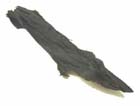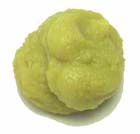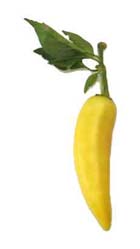|
|
Glossary Selection
Waldorf salad | |||
| A Waldorf salad is a salad consisting of apple, nuts (especially walnuts), celery, and mayonnaise or a mayonnaise-based dressing. It was first created in 1896 at the Waldorf-Astoria Hotel in New York by Oscar Tschirky who was the maître d'hôtel. It is traditionally served on lettuce. Dried fruit is often added--usually chopped dates or raisins. | |||
Wakame | |||
 | A long, thin, green sea vegetable used in making soups, salads, and vegetable dishes. | ||
Wassail | |||
| Wassail is a spiced punch drunk at Twelfth Night and Christmas celebrations. Wassail is most commonly recognized as an obscure reference in various traditional Christmas carols (for example, Here we come a-wassailing among the leaves so green). The term derived from the Old Norse wes hál, meaning be in good health, and was originally used as a toast, the appropriate resp | |||
Water bath | |||
| Bain-marie or Mary's bath is a method utilised in industry (phamaceutical, cosmetics, conserves, etc.), chemical laboratories and in the kitchen to slowly warm or convey uniform temperature to a liquid or solid substance, by submerging the container into a larger one with boiling or near boiling water. The main concept here is that of bath which implies indirect heating of a substance. Heat transfer to the medium (water of the bath) is by convection, while conduction is the process involved in the warming of the substance. The medium (bath) could be mineral oil; pure water, salt solutions of varying solutes concentrations, etc., depending on the temperature at which the substance is required to be warmed. It is customary to add medium at ambient (room) temperature to decrease its temperature and consequently the heat transfer rate from it to the substance. The term originates from alchemy, where some practitioners needed to give their materials prolonged periods of gentle heating, in an attempt to mimic the supposed natural processes whereby precious metals germinated in the earth. It was said to be an invention of Mary the Jewess, an ancient alchemist and traditionally supposed to have been Miriam, a sister of Moses. The name comes from this tradition: balneum Mariae in medieval Latin, from which the French bain de Marie is derived, although, in the french wikipedia the coinage of the term is attributed to the medieval German philosopher and theologian Saint Albert the Great (1193-1280). | |||
Wasabi (Wasabi peas) | |||
| Wasabi is a member of the cabbage family. Known as Japanese horseradish, its root is used as a spice and has an extremely strong flavor. Its hotness is more akin to that of a hot mustard than a chile pepper, producing vapors that burn the sinus cavity rather than the tongue. The plant grows naturally along stream beds in mountain river valleys in Japan. There are also other species used, such as W. koreana, and W. tetsuigi. The two main cultivars in the marketplace are W. japonica var. Duruma and Mazuma, but there are many others. | |||
Wasabe | |||
 | Wasabi is a member of the cabbage family. Known as Japanese horseradish, its root is used as a spice and has an extremely strong flavor. Its hotness is more akin to that of a hot mustard than a chile pepper, producing vapors that burn the sinus cavity rather than the tongue. The plant grows naturally along stream beds in mountain river valleys in Japan. There are also other species used, such as W. koreana, and W. tetsuigi. The two main cultivars in the marketplace are W. japonica var. Duruma and Mazuma, but there are many others. | ||
Wax paper | |||
 | Wax paper (also called waxed paper) is a kind of paper that is made moisture proof through the application of wax. The paper was invented in 1872 by Thomas Edison when he was 25 years old. It is commonly used in cooking (for non-stick properties) and wrapping food for storage (keeps water out or in). It is also used in arts and crafts. The paper is also used in the manufacture of some less expensive models of the musical instrument the kazoo. One can make a simple kazoo by combining a small piece of wax paper and a comb, then blowing over it. Another use of wax paper is to apply wax to objects. By rubbing the wax paper on an object the wax will rub off the paper and onto the object. This is useful for adding a slight polish or to reduce friction. | ||
Weakfish | |||
| The white or pinkish-white meat is low in fat and fine in texture. The flavor is mild and sweet with edible skin. Fillets can be baked, pan-fried, broiled, or grilled (use a grill basket). Note that weakfish fillets, like flatfish fillets, flake easily when cooked, so handle with care. Whole fish are delicious roasted with fresh herbs. Whole fish look similar to trout, so take care not to confuse the two. Fillets may be white or pinkish-white, but should be of uniform color and free of browning, gaping, and signs of drying. Its smell should be seawater fresh. | |||
Well-and-tree platter | |||
| For centuries, holiday roasts have been served from well-and-tree platters. This distinctive and efficient design features a tree-shaped trough where meat juices collect rather than spilling over the edges of the plate. | |||
Zuppa | |||
| The Italian word for soup. | |||




